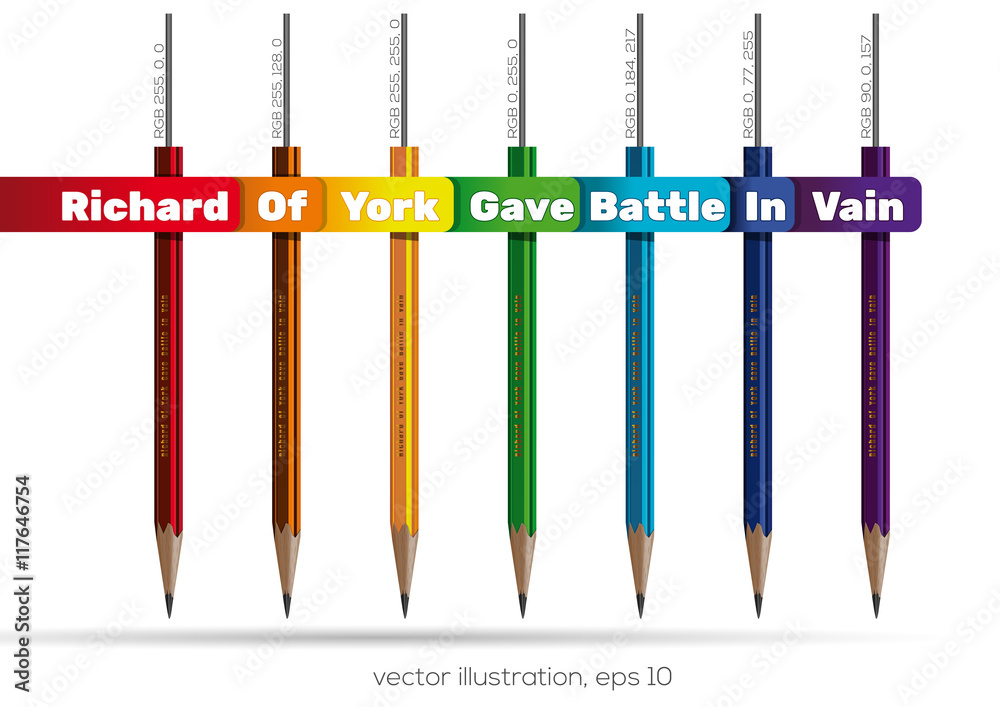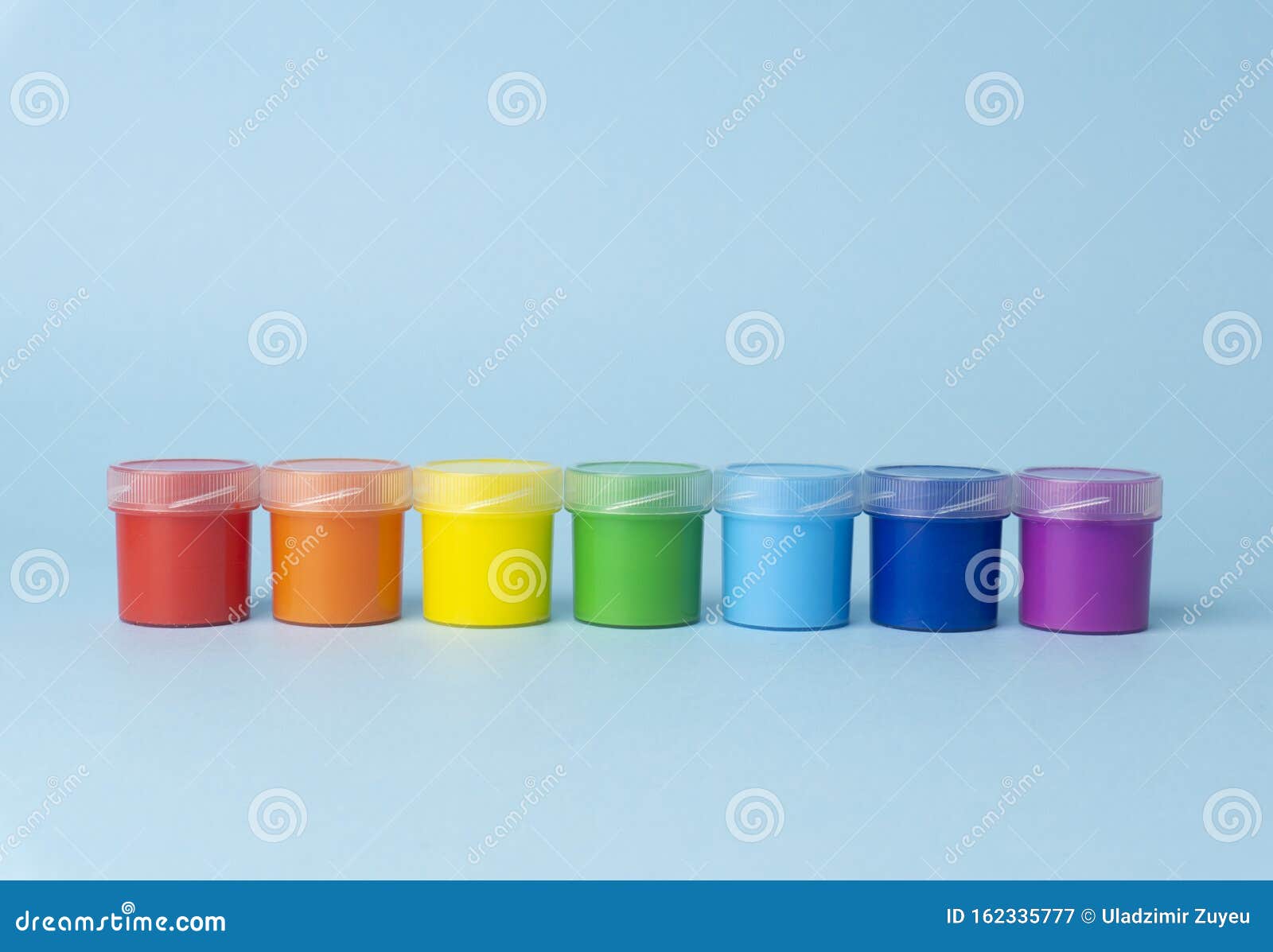Have you ever wondered about the rainbow colors in sequence and their significance? Rainbows are one of nature's most breathtaking phenomena, captivating people across cultures and generations. These vibrant arches of color are not just a visual delight but also a fascinating scientific occurrence. Understanding the sequence of rainbow colors opens the door to learning about light, physics, and even art. This article dives deep into the topic, exploring everything from the science behind rainbows to their cultural significance.
From red to violet, each color in the rainbow plays a unique role in creating the spectrum we admire. This article will guide you through the rainbow colors in sequence, explaining how they appear, their scientific properties, and their symbolic meanings. Whether you're a science enthusiast, an artist, or simply curious about nature's wonders, this article has something for everyone.
As we explore the rainbow colors in sequence, we'll also touch upon their historical and cultural importance. Rainbows have inspired countless stories, myths, and artistic expressions throughout history. By the end of this article, you'll have a comprehensive understanding of why rainbows are so special and how their colors work together in harmony.
Read also:Who Was Hannitys Former Wife Unveiling The Life Of Sean Hannitys Exspouse
Table of Contents
- Introduction to Rainbow Colors in Sequence
- The Science Behind Rainbows
- The Sequence of Rainbow Colors
- Physics of Light and Color
- Symbolic Meaning of Rainbow Colors
- Historical and Cultural Significance
- Rainbows in Art and Literature
- Variations of Rainbows
- Frequently Asked Questions
- Conclusion and Call to Action
Introduction to Rainbow Colors in Sequence
Rainbows are a natural phenomenon caused by the reflection, refraction, and dispersion of light in water droplets. The sequence of rainbow colors is a result of these processes, creating a spectrum that appears in a specific order. Understanding the rainbow colors in sequence is essential for anyone interested in optics, meteorology, or even photography.
Why Do Rainbows Appear?
Rainbows typically appear after rainfall when sunlight interacts with airborne water droplets. The interaction causes the light to split into its constituent colors, forming a spectrum. This process is known as dispersion, and it is responsible for the beautiful display of colors we see in the sky.
How Are Rainbows Formed?
The formation of rainbows involves several steps, including reflection, refraction, and dispersion. When sunlight enters a water droplet, it slows down and bends, causing the light to split into its component colors. Each color bends at a slightly different angle, resulting in the distinct sequence of colors.
The Science Behind Rainbows
The science behind rainbows is rooted in optics and the behavior of light. Understanding the principles of reflection, refraction, and dispersion helps explain why rainbows appear in a specific sequence. This section explores these concepts in detail, providing insights into the physics of rainbows.
Reflection and Refraction
Reflection occurs when light bounces off a surface, while refraction happens when light changes speed and direction as it passes through different mediums. In the case of rainbows, water droplets act as tiny prisms, refracting and reflecting sunlight to create the spectrum of colors.
Dispersion of Light
Dispersion is the process by which white light splits into its constituent colors. Each color corresponds to a specific wavelength, with red having the longest wavelength and violet the shortest. This variation in wavelength causes the colors to separate and form the rainbow's sequence.
Read also:Is Megan Is Missing Real Clips Unveiling The Truth Behind The Controversy
The Sequence of Rainbow Colors
The sequence of rainbow colors is always the same: red, orange, yellow, green, blue, indigo, and violet. This order, often remembered by the acronym ROYGBIV, is a result of the varying wavelengths of light. Each color in the sequence plays a unique role in the formation of the rainbow.
Why Is the Sequence Always the Same?
The sequence of rainbow colors remains consistent because it is determined by the physical properties of light. Longer wavelengths, such as red, bend less than shorter wavelengths, like violet, resulting in the familiar order of colors.
Physics of Light and Color
Light is an electromagnetic wave that travels in a straight line until it encounters an obstacle or medium. The behavior of light when interacting with water droplets is governed by the principles of physics, including wave theory and quantum mechanics. This section delves into the physics of light and color, explaining how they contribute to the formation of rainbows.
Wave Theory of Light
According to wave theory, light travels in waves with varying wavelengths and frequencies. When light passes through a water droplet, its speed changes, causing it to bend and split into its component colors. This bending is what creates the rainbow's sequence.
Quantum Mechanics and Light
Quantum mechanics provides a deeper understanding of how light interacts with matter at the atomic level. While not directly responsible for the formation of rainbows, quantum mechanics helps explain the behavior of photons and their role in the dispersion of light.
Symbolic Meaning of Rainbow Colors
Rainbow colors carry symbolic meanings in various cultures and traditions. From spiritual interpretations to artistic expressions, the sequence of rainbow colors has inspired countless stories and metaphors. This section explores the symbolic significance of each color in the rainbow.
- Red: Symbolizes energy, passion, and vitality.
- Orange: Represents creativity, adventure, and warmth.
- Yellow: Associated with happiness, optimism, and enlightenment.
- Green: Linked to growth, harmony, and renewal.
- Blue: Represents calmness, trust, and stability.
- Indigo: Associated with intuition, spirituality, and wisdom.
- Violet: Symbolizes creativity, luxury, and inspiration.
Historical and Cultural Significance
Rainbows have been revered throughout history, appearing in myths, legends, and religious texts. From ancient civilizations to modern times, the sequence of rainbow colors has inspired awe and wonder. This section examines the historical and cultural significance of rainbows across different societies.
Rainbows in Mythology
In Greek mythology, the rainbow was considered a bridge between heaven and earth, symbolizing the connection between gods and mortals. Similarly, Norse mythology associated rainbows with the Bifrost Bridge, linking Asgard to Midgard.
Rainbows in Modern Culture
In contemporary culture, rainbows are often used as symbols of hope, diversity, and unity. The rainbow flag, for example, has become a powerful emblem for the LGBTQ+ community, representing inclusivity and acceptance.
Rainbows in Art and Literature
Artists and writers have long been inspired by the beauty of rainbows, incorporating their sequence of colors into their work. This section explores how rainbows have been depicted in art and literature, highlighting notable examples from history.
Famous Artworks Featuring Rainbows
Some of the most famous artworks featuring rainbows include Turner's "Rain, Steam, and Speed" and Monet's "The Water-Lily Pond." These paintings capture the essence of rainbows, using color and light to convey emotion and atmosphere.
Literary References to Rainbows
From Shakespeare's "The Tempest" to Wordsworth's poetry, rainbows have been a recurring theme in literature. Writers often use rainbows as metaphors for hope, transformation, and new beginnings.
Variations of Rainbows
While the sequence of rainbow colors remains constant, there are variations in the appearance of rainbows depending on environmental conditions. This section discusses different types of rainbows and their unique characteristics.
- Double Rainbows: Occur when light is reflected twice inside water droplets, creating a secondary arc with inverted colors.
- Lunar Rainbows: Formed by moonlight instead of sunlight, these rainbows are fainter and less colorful.
- Fogbows: Appear in foggy conditions, with a white or pale spectrum due to smaller water droplets.
Frequently Asked Questions
Here are some common questions about rainbow colors in sequence and their answers:
- What causes the sequence of rainbow colors? The sequence is caused by the dispersion of light into its constituent colors, with each color bending at a different angle.
- Why do rainbows always appear in the same order? The order is determined by the wavelengths of light, with red having the longest wavelength and violet the shortest.
- Can rainbows appear without rain? Yes, rainbows can form in mist, fog, or even spray from waterfalls.
Conclusion and Call to Action
In conclusion, the sequence of rainbow colors is a fascinating example of nature's beauty and complexity. From the science of light and color to the cultural significance of rainbows, this article has explored every aspect of this natural phenomenon. By understanding the sequence of rainbow colors, we gain a deeper appreciation for the wonders of the world around us.
We encourage you to leave a comment below sharing your thoughts on rainbows and their colors. Do you have a favorite color in the sequence? Have you ever witnessed a double rainbow or a lunar rainbow? Let us know! Additionally, feel free to explore other articles on our site for more fascinating insights into science, nature, and culture.
Thank you for reading, and may your days be filled with the vibrant colors of the rainbow!

